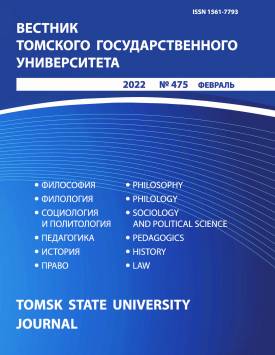Natural-resource factors of the industrial colonization of the Kama region in the evaluation of early Soviet historiography
The article considers the problem of the development of the tradition of studying natural, demographic, technological resources and conditions of the industrial colonization of the Kama region in the 18th - early 20th centuries in the early Soviet historiography of the 1920s-1930s. Interdisciplinary research was carried out in conditions of methodological variety, expanding the organizational capabilities of professional academic activities. Work on the creation of the history of the mills and factories started in the early 1930s and stimulated the study of local plants. However, scientific exploration of this topic was complicated by changes of previous intra- and inter-economic relations of the regions, including the Ural-Volga region. Thus, in Vyatka Governorate, in the second half of the 19th century, there functioned both governmental and private mining districts, among the latter were Kholunitsky and Omutninsky, which belonged to the Northern Economic District and became part of various national and territorial entities as a result of Soviet administrative reforms. The main attention is paid to the analysis of the works of historians, as well as representatives of other fields of knowledge (economists, geographers, teachers, art historians). Some of them were published under the aegis of the State Academy of the History of Material Culture named after N.Ya. Marr. In all, early Soviet historiography, despite the excessive politicization of the production life of enterprises and economic determinism, characteristic of the Marxist concept, achieved noticeable success in the study of the fundamental scientific and practical problem of natural and anthropogenic mutual influence in the course of the socioeconomic and cultural development of the country's territory. A tradition was fixed and developed to consider the most important thematic plots within the framework of the theory of colonization as the main factor of the “Russian historical process”. Attention was focused on identifying the economic, geographical and technical features of the mining Urals and its component - the Kama region, on reconstructiing the full cycle of metallurgical production, settlements' planning and locating. Especially valuable is the researchers' observations regarding the direct dependence of settle ments' existence not only on foreign and domestic conditions, but also on natural resources: minerals, fuel, building material, road junctions, driving force of mechanisms, etc. The works were based on a critical understanding of the works of the previous period. Diverse sources were introduced into scholarly discourse. A basis was created for productive academic discussions that determined the prospects for further research.
Keywords
natural-resource factors, anthropogenic impact, mining industry, Prikamye, imperial period, early soviet historiographyAuthors
| Name | Organization | |
| Bekhtereva Lyudmila N. | Udmurt Federal Research Center of the Ural Branch of the Russian Academy of Sciences | behterevaln@yandex.ru |
References

Natural-resource factors of the industrial colonization of the Kama region in the evaluation of early Soviet historiography | Vestnik Tomskogo gosudarstvennogo universiteta – Tomsk State University Journal. 2022. № 475. DOI: 10.17223/15617793/475/18
